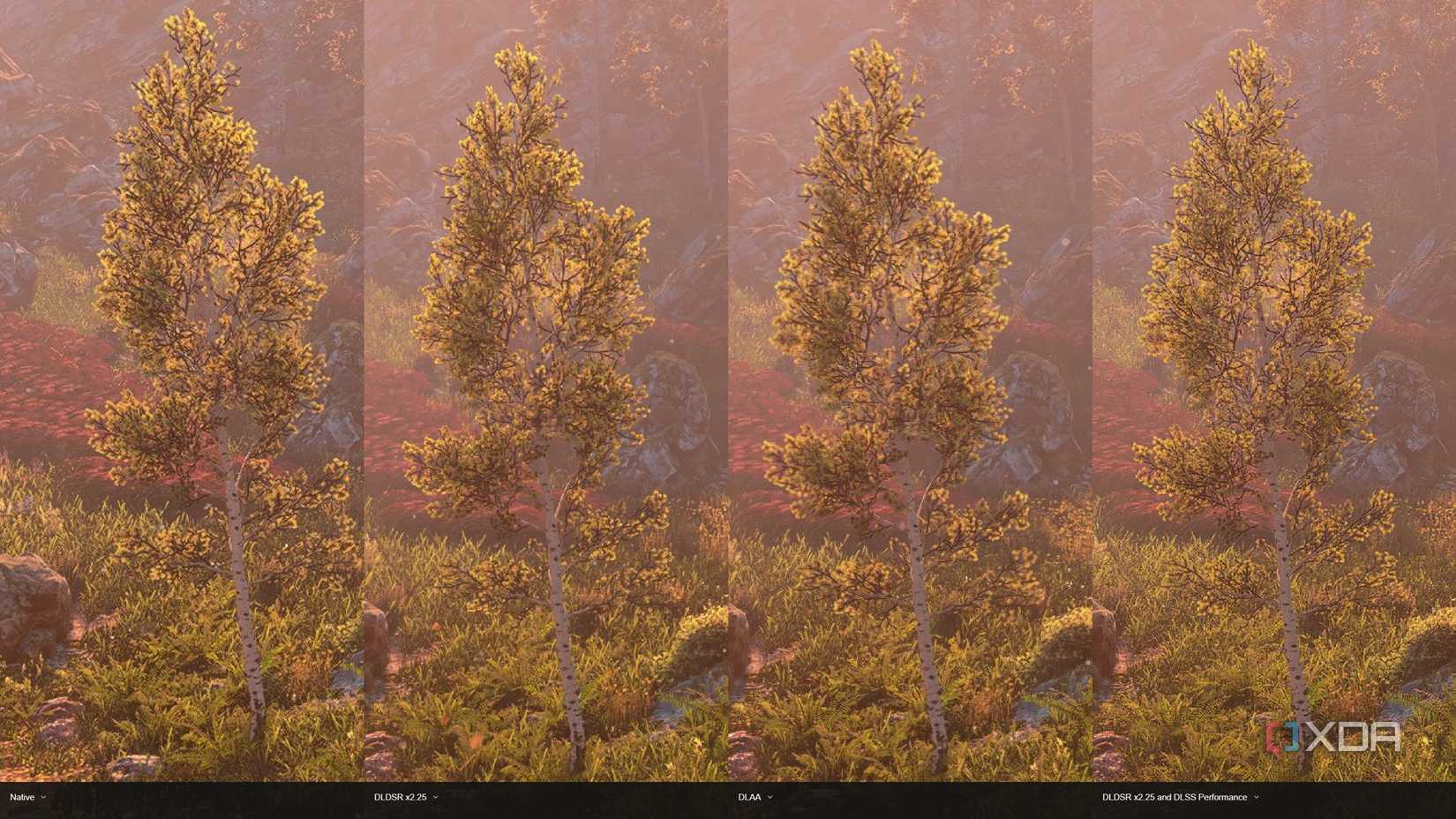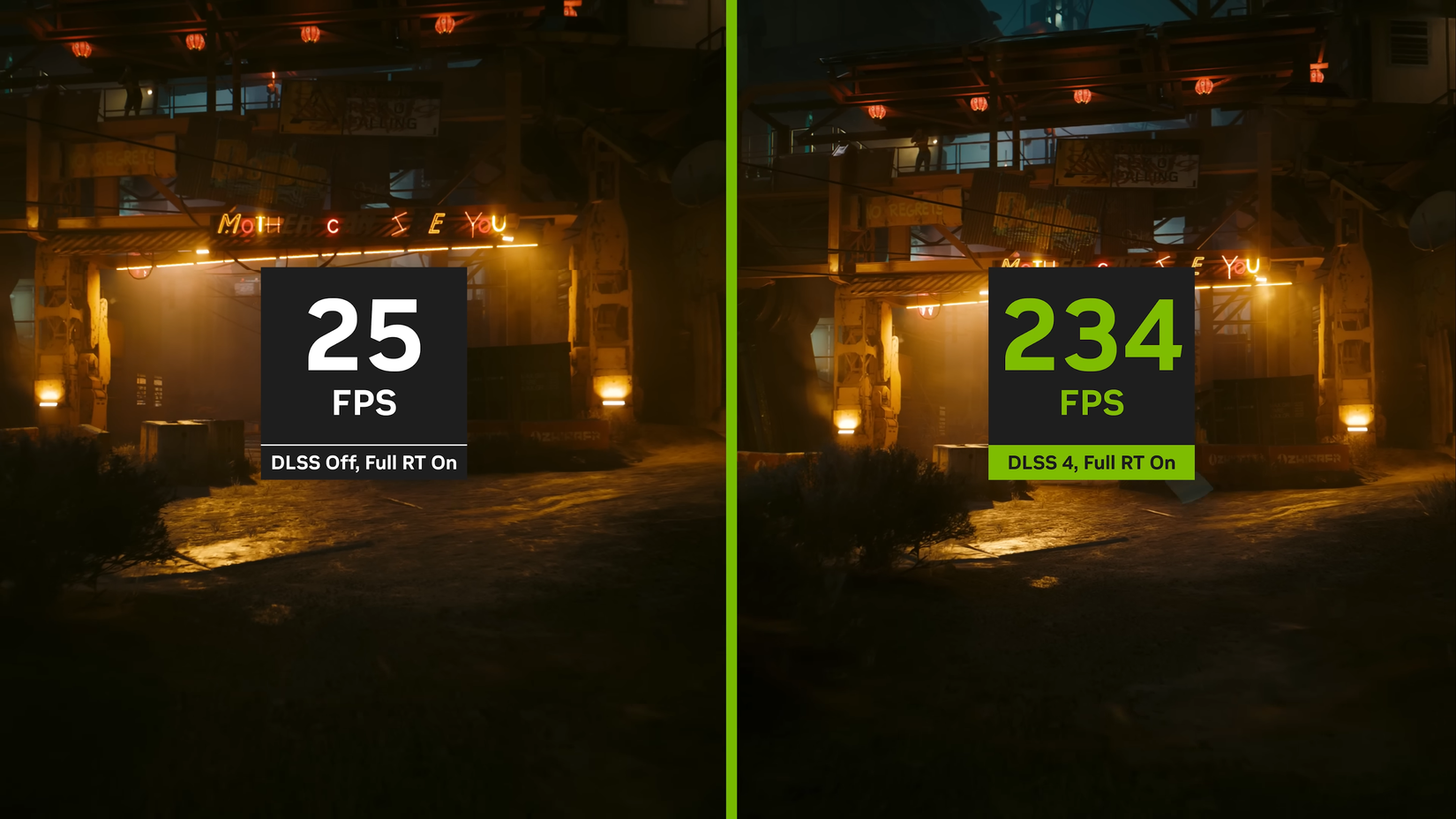Hamlin has been in the tech field for over seven years. Since 2017, his work has appeared on MakeUseOf, OSXDaily, Beebom, MashTips, and more. He served as the Senior Editor for MUO for two years before joining XDA. He uses a Windows PC for desktop use and a MacBook for traveling, but dislikes some of the quirks of macOS. You're more likely to catch him at the gym or on a flight than anywhere else.
Nvidia's DLSS has come a long way since its introduction in 2018. It has enabled gamers with mid-range graphics cards, such as the RTX 4070 and 5070, to experience 4K gaming at playable frame rates. That's why Nvidia never hesitates to boast about this feature every time it launches a new GPU. After all, why game at native 4K when you can upscale from a lower resolution for nearly the same visual quality but with much better performance? For most gamers, DLSS makes perfect sense.
However, DLSS isn't the only AI-powered rendering feature Nvidia offers, even though it gets all the attention. DLAA (Deep Learning Anti-Aliasing) shares the same technology as DLSS, but applies it differently. Instead of upscaling from a lower resolution, DLAA renders at native resolution and uses the DLSS transformer model solely for anti-aliasing. The result is a cleaner, more stable image with fewer artifacts compared to traditional AA methods like TAA. After experimenting with both, I've found myself relying more on DLAA, and here's why.
I play games at 1440p
When you use a high-end GPU for 1440p gaming, DLAA makes more sense
I currently use an RTX 4090, which is typically a card most people use for 4K gaming. Since I have it connected to a 1440p ultrawide monitor, I rarely have to worry about hitting high frame rates as long as I leave ray tracing disabled. As long as the frame rates stay above 80FPS in AAA single-player games, I'm perfectly satisfied with the experience and don't need to rely on DLSS upscaling or frame generation. At that point, what matters more is image quality, and that's exactly when DLAA proves its worth.
If I enable the DLSS Quality setting while using a 1440p monitor, the game would render internally at 960p and upscale it to 1440p, which doesn't sound appealing when I'm looking for the best image quality. Sure, I could run the game natively with TAA, but the issue is that TAA often blurs the image and introduces ghosting, which makes motion appear less smooth. With DLAA, I get the same temporal stability as TAA but without the blur or ghosting, so the image stays crisp even when I'm moving around in the game. And unlike DLSS, I know I'm looking at a natively rendered image, not a reconstruction from a lower resolution.
Better visual quality
DLAA beats DLSS every time if you care about the finer details while gaming

My problem with DLSS Super Resolution (upscaling) for the longest time has been image quality. Since I sit very close to my 34-inch ultrawide monitor, I can immediately notice how the game looks softer once I enable it, even when using the DLSS Quality setting. Sure, DLSS 4 is a huge improvement and gets very close to native resolution while maintaining motion stability, but the reality is that it still scales better at 4K than at 1440p. That's why I don't use it at all unless I'm gaming on my 4K monitor.
Since the internal render resolution is much lower on a 1440p monitor than on a 4K monitor, I still notice some softness and reconstruction flaws, especially in fast-paced games. For instance, thin objects like fences and foliage tend to shimmer when I move my mouse around, and textures in the distance can sometimes flicker during camera movement. However, when I use DLAA, I don't have to worry about any of these issues because the AI-based anti-aliasing is applied to the native resolution, delivering smoother edges and preserving fine detail that often gets lost with DLSS.
Frame generation makes DLAA viable
I can always rely on frame generation if I'm not satisfied with my average FPS
 Credit: Source: Nvidia
Credit: Source: NvidiaThere's a common notion that you need to enable DLSS upscaling to use frame generation because of how Nvidia tied it to DLSS 3 at launch. But that's not really the case in most newer titles; you can set the DLSS setting to DLAA if a game supports it and use frame generation to get the best of both worlds. This way, the game looks as sharp as it would at native resolution while running smoothly at higher frame rates, thanks to AI-generated frames that fill the gaps between real ones for maximum fluidity.
As much as I love using DLAA over TAA, it usually comes at the cost of 5–10% of my average FPS, depending on the game. Although that isn't a big deal in most AAA titles I play, some intensive open-world games can be demanding enough to push my frame rates below 60FPS while using DLAA. In such cases, frame generation becomes the perfect safety net, giving me the extra smoothness I need without forcing me to fall back on DLSS upscaling. Of course, it's not perfect because it adds latency and makes the game feel less responsive, but that trade-off is hardly noticeable in single-player titles.
DLAA gives me the gaming experience I want
I love how DLSS has made 4K gaming feasible for most people, but as someone who plays on a 1440p ultrawide monitor with an RTX 4090, the last thing I want to rely on is upscaling. I'll admit that I don't mind using it when I'm gaming on my 4K monitor, but the AW3425DW's OLED display actually makes 1440p gaming feel just as immersive. If anything, enabling DLSS upscaling only takes away from my experience because of the sharpness hit. That's why I lean toward DLAA whenever it's available. It gives me the cleanest image possible without the blur or ghosting I’d get from TAA, and without the softness or artifacts introduced by DLSS. And if I'm not happy with my FPS, I can always turn on frame generation for a smoother experience. At the end of the day, I like chasing visual fidelity when it comes to AAA single-player games, and for that, DLAA is objectively better.
.png)












 English (US) ·
English (US) ·